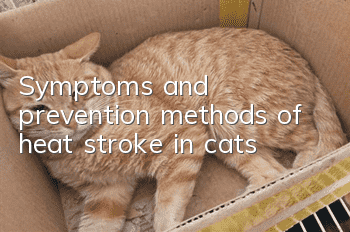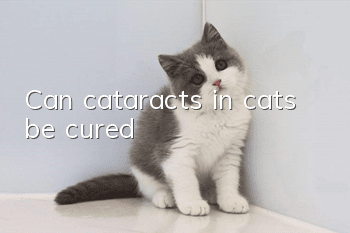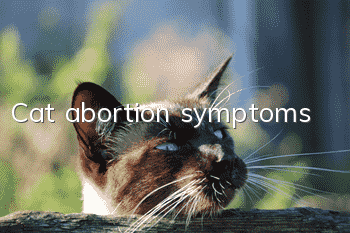Symptoms and prevention methods of heat stroke in cats

Symptoms of heatstroke in cats include ||increased body temperature,||mouth breathing,||anorexia, ||vomiting, ||general weakness,||increased heart rate. Heat stroke in cats can lead to paralysis and death due to dehydration and blood clotting. To prevent heatstroke in cats, pay attention to trimming the coat, ensuring ventilation, cooling products, sufficient water sources, and avoiding excessive temperature differences.
Symptoms of heat stroke in cats
1. Increased body temperature: The body temperature is higher than normal 2. Mouth breathing: Breathing and panting 3. Anorexia: Not eating food 4. Vomiting: Unexplained vomiting 5. General weakness: Lying down all day and looking uninspired 6. Increased heart rate: Breathing more rapidly than usual
Heatstroke can be fatal in cats
In general, for cats suffering from heat stroke, in addition to quickly moving to a cool and ventilated place, in emergency treatment, they should also be given ice compresses to lower their body temperature and be sent to the hospital for emergency treatment. When a cat or dog suffers from heat stroke, if the body temperature exceeds 40 degrees Celsius, the chance of survival is usually very low; on the contrary, if the body temperature has dropped below 35 degrees Celsius, it means that the cat has been severely dehydrated and is in shock, and the fatality rate is also very high. Another fatal risk of heat stroke is blood coagulation. In addition to causing "vascular embolism", blood coagulation can lead to cardiopulmonary failure. If it occurs in the lower limbs, it will cause paralysis. This type of paralysis is different from stroke. Paralysis caused by stroke still has a chance of survival. Paralysis caused by blood coagulation will produce various sequelae because the blood cannot circulate. Even if you can barely survive, In the future, the affected leg may need to be amputated due to lack of blood circulation and tissue necrosis.
Methods to prevent heatstroke in cats
1. Trim excessively long hair: Trimming the cat's hair to an appropriate length in the summer can help the cat dissipate heat, and summer is also the season when the cat moults, which can prevent the cat from licking too much hair into the body. Describe a hairball. 2. Good ventilation environment: Blowing cold air is the best way to dissipate heat. But you can usually keep your home ventilated smoothly. Turning on the electric fan can also achieve the effect of heat dissipation. But avoid the electric fan blowing directly onto the cat, otherwise it will be counterproductive. 3. Cool and heat-relieving products: There are many cool and heat-relieving products on the market. The cat owner can consider whether to buy more to dissipate heat for the cat, depending on the cat’s condition. You can also make cooling products for cats at home. You only need to put the water bag in the freezer, wait for it to freeze, then take it out, and then wrap it in a towel to prevent direct contact with the cat's body. It is a considerate homemade product. A holy product for relieving summer heat, your cat won’t be able to put it down. 4. Sufficient clean water: In the hot summer, coupled with the cat’s active personality and overheated body temperature, it is easy for the cat to become dehydrated. If water is not replenished in time, it can easily cause the cat to go into shock. Therefore, the cat must be trained more and develop a healthy diet. The habit of drinking plenty of water is okay. catMicrophones rely on breathing to dissipate heat, and the evaporation of water can help it take away unnecessary body heat. 5. Avoid excessive temperature differences: Do not allow cats to frequently enter and leave places where the temperature changes too much. This will cause the body temperature regulation center to be unable to respond in time, leading to heat stroke.
- Why do cats only meow at people but rarely at other cats of the same species?
- What will happen if a cat eats raw eggs?
- Which houseplants and flowers are toxic to cats?
- Can I keep a cat while pregnant?
- What is the normal weight of a cat?
- What is the general price of a blue cat with folded ears? Price of a blue cat with folded ears!
- How to train a cat to poop on the toilet
- At what age can a cat brush its teeth?
- Why do cats sometimes have yellow discharge from their ears?
- How are fold-eared cats bred? Once you know it, you will realize how cruel humans are!



